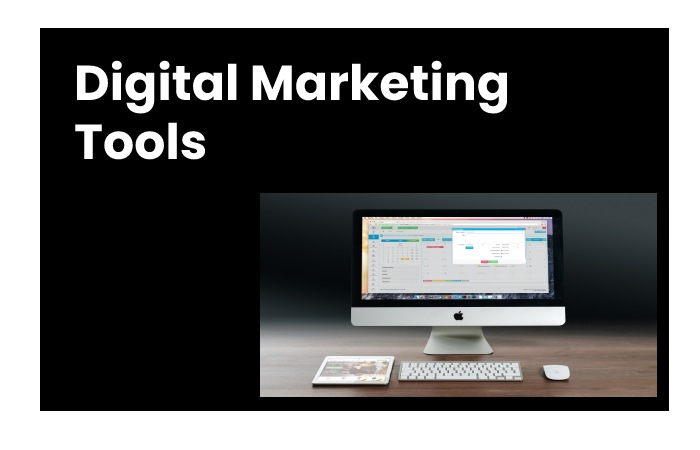Table of Contents
Digital Marketing Definition
The limitations of the offline environment lead us to develop more new and better actions in the online world, which has a series of advantages such as immediacy and its global capacity to achieve our goal.
With digital marketing, the decision-making capacity is not only held by the company that launches its strategy. It is also the user who has a remarkable power of choice. He can freely express his opinion and search for what he is looking for through a series of filters without going directly to the brand.
Given this situation, a digital strategy must consider all these factors if you want to place your product or service on the market. Therefore, not a few potential customers have a mobile phone, tablet, or computer and connect to the Internet daily.
Brands know this, so they focus their efforts on specific digital marketing actions.
Why Apply Digital Marketing to a Business?
Here are Some Reasons for it:
- Technology allows us to share information instantly.
- It can reach a vast audience from all over the world to attract more customers.
- Greater comfort. With a single click, you can share articles and videos.
- It is very flexible. Campaigns started online can be varied or modified on the fly if we feel that
- something is not working as it should or we need to give them a new impetus.
- Create community. In the online world, we constantly interact with users from all over the planet in
- two-way communication.
- Investment costs are lower than in traditional media.
- It allows greater control of the campaigns by segmenting them into specific niches (age, sex, population) and after obtaining the results’ metrics.
Digital Marketing Tools

The Network is a large virtual community where communication and information exchange occurs in two directions. Brands and users are constantly in the 2.0 world, with exciting feedback. Companies are aware that they must also direct their sales and advertising strategy to the online public and use the digital tools that this area provides them with, such as:
- Web page.
- Blog.
- Seekers.
- Social media.
How to do Digital Marketing?
Digital Marketing is a pervasive issue with an enormous diversity of disciplines, strategies, and specific techniques. Thus, there are innumerable ways to apply Digital Marketing.
But, despite the significant number of possibilities of Digital Marketing applications, those strategies/techniques stand out for being used by the vast majority and usually bring positive results. They are:
- Content Marketing;
- Email Marketing;
- Social media;
- Conversion Optimization – CRO;
- Search Marketing – SEM.
- Next, we are going to talk a little about each of these tactics:
Content Marketing
Content Marketing is all content made to educate, notify, or entertain a prospective customer. The idea is to teach people so that in the future, they not only respect your brand and have it as a reference but also become customers of your company.
Content is not just any content: it must talk about problems related to your market and your people’s possible issues and doubts (the fictional representations of your target audience).
Email Marketing
Email Marketing means the straight sending of a commercial message, typically to a collection of people, through email. Thus, every email sent to a possible or recent customer can be considered Email Marketing.
Generally, its used to send promotions, acquire businesses, solicit sales or donations, and its purpose is to build loyalty, trust or branding
Social Media
Starting in the 2000s, mainly with the arrival of Orkut, social networks became immensely popular throughout the world as a new form of online socialization. Over time, social networks have become an exciting space for those looking for new channels to apply Digital Marketing.
However, several advantages encourage companies to be present in social networks. The first and primary them is the very high number of current users. Email Marketing can use for sold lists (although this practice is not the most appropriate) or for built lists, both of clients and potential clients (Leads).
Conversion Rate Optimization (CRO)
We call this way all the effort to increase conversion rates for a specific objective. That is, reduce friction and increase the proportion of people who act necessary to go from context A to context B. In the case of a physical product store, an everyday example is the existence of a relationship between the number of people who enter the store and the number of people who buy something. This association can be seen as a conversion rate, in this case, of visitors who make a purchase.
In Digital Marketing, our goal is to have an online presence that plays a part in the visitor’s purchase process, educating them about the problems and opportunities they face and generating value for your product or service.
Search Marketing – SEM
In the 2000s, online search engines emerged with the mission of helping users to search for websites of practically all niches.
With time, search engines provided for Internet users began to spread. However, a large part of the web public rapidly began to use the Network to search for facilities and entertainment tailored to each one.
Of the search tools that have become prevalent since then, Google has undeniably been the most significant reference.
SEO
At the beginning of this era that we are talking about, the difficulty in appearing among the first places of online searches was not very great, so practically all those who decided to apply “techniques” that aimed to increase that exposure was successful.
However, with the evolution of the procedures that determined who would or would not appear in the first places of the search results, this type of objective became more complex, and, with that, a new discipline emerged within Digital Marketing: SEO
Sponsored Links
They are conducts of advertising on the Internet over advertising space in search results or content network websites that frequently pay per click (also known as Pay Per Click or PPC).
The ads need to be related to the keyword used in the search or a segmentation setting.
How to Make a Digital Marketing Planning?
Investment in Digital Marketing can be something that will save your business numbers. However, executing the various actions that constitute this methodology in a disorderly manner, without strategic planning, can also be a shot in the foot.
Therefore, there are a series of stages that must consider when planning your company’s Digital Marketing. They will ensure the maximum results of each action. See below:
Make a Present Status Report
Before anything else, keep in attention that to regulate where you want to go, you need to know where you are. You will see your key strengths, weaknesses, and changes through the current status report. Thus, having this information, you will be able to more efficiently determine your goals and move on to the next steps.
Do a Study of the Target Audience (People)
At first glance, many business owners who want to invest in Digital Marketing do not find a people study necessary, claiming that they already know enough about their audience. However, the phrase that says that “knowledge never hurts” is valid here.
Determine your Goals
You determine your goals with a clear vision of your goal audience and your current tasks. Set some goals so that later you will be able to say if your Digital Marketing planning was correct or not.
List the Resources Needed to Achieve your Goals
After having obvious what your objectives are. It’s time to trace the path you need to reach them all, right?
List all the tasks that need to complete to achieve the goal, including necessary resources for the functions to complete.
Make a Schedule
Making a schedule is essential to have a slight delay as possible. In addition, periodically monitoring the program can be valuable to achieve a healthy consistency throughout your plan.
Conclusion Of Digital Marketing
Digital Marketing is the set of strategies to promote a brand on the Internet. It varies from traditional marketing by including channels and methods that allow the analysis of results in real-time.

